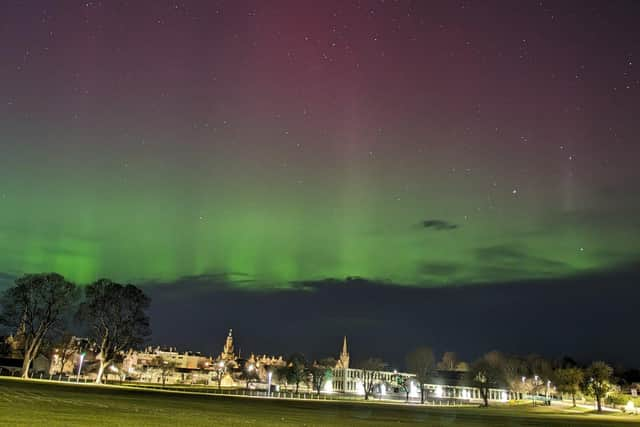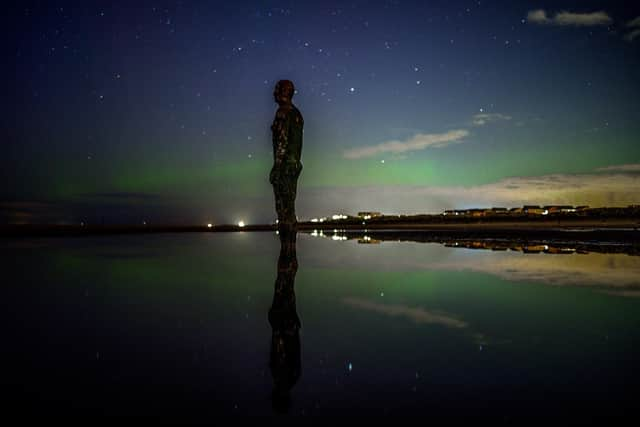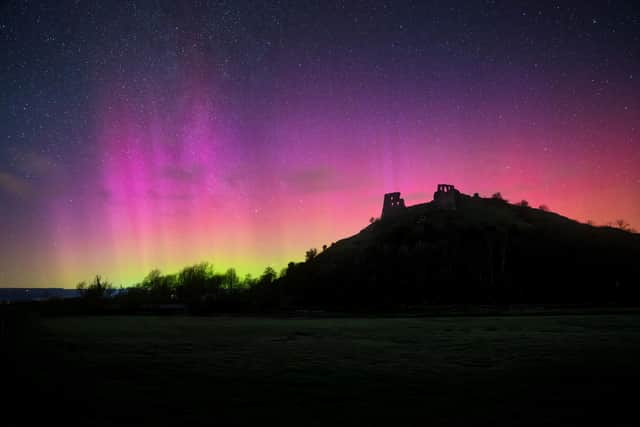First Northern Lights of spring light up skies in Scotland and northern England from Loch Ness to Merseyside
The night sky has lit up in spectacular shades of pink, blue and green from Loch Ness to Merseyside as people reported viewing the spectacular showcase of the Northern Lights across the UK.
The phenomenon, also known as Aurora Borealis, is occasionally visible from the UK, with the display typically most active during the Equinox and Solstice in March/April and September/October.
Advertisement
Hide AdAdvertisement
Hide AdPeople were able to witness the light show on Sunday night amid relatively clear weather conditions, with sightings reported across northern Scotland, including from Loch Ness and Fort Augustus.


Images were also taken at Merseyside, with green lights clearly visible behind one of the iron men statues at Anthony Gormley's Another Place on Crosby Beach, as well as in North Wales.
The aurora can usually only be observed in the most northern of countries such as Iceland, Russia, Canada, and Finland.
Dr Minjae Kim, research fellow, Department of Physics, University of Warwick, said: “During periods of heightened geomagnetic activity, the auroral ovals expand, allowing for sightings further south in the UK.
"While auroras are more commonly observed in northern regions like Scotland, seeing them in other parts of the UK, as seen last night in southern UK, is exceptionally rare.”


Dr Kim said thar some of the best places for aurora viewing include: Brecon Beacons National Park, an international dark sky reserve in Wales; Exmoor National Park, an international dark sky reserve in England; Galloway Forest Park, an international dark sky park in Scotland; and Kerry international dark sky reserve in Ireland.
The prime viewing times are during the darkest hours usually from 11pm to midnight, but the lights are typically visible between 9pm and 2am.
Forecasting when the Northern Lights will be visible from the UK again is difficult but, according to the BGS Global geomagnetic activity forecast, no significant enhancements are expected.
Advertisement
Hide AdAdvertisement
Hide AdDr Kim said: “Geomagnetic activity is forecasted to remain relatively quiet for the remainder of this period. As a result, it might be challenging to observe the aurora.


“However, tonight (March 4-5) appears to be the most promising night for aurora viewing, albeit still not highly active.”
The natural light display is caused by charged particles from the Sun interacting with Earth’s magnetic field.
The colour display depends in part on what molecules the charged particles interact with. Red and green colours tend to be hallmarks of oxygen, pink and red the signs of nitrogen with blue and purple being the results of hydrogen and helium.
Comments
Want to join the conversation? Please or to comment on this article.